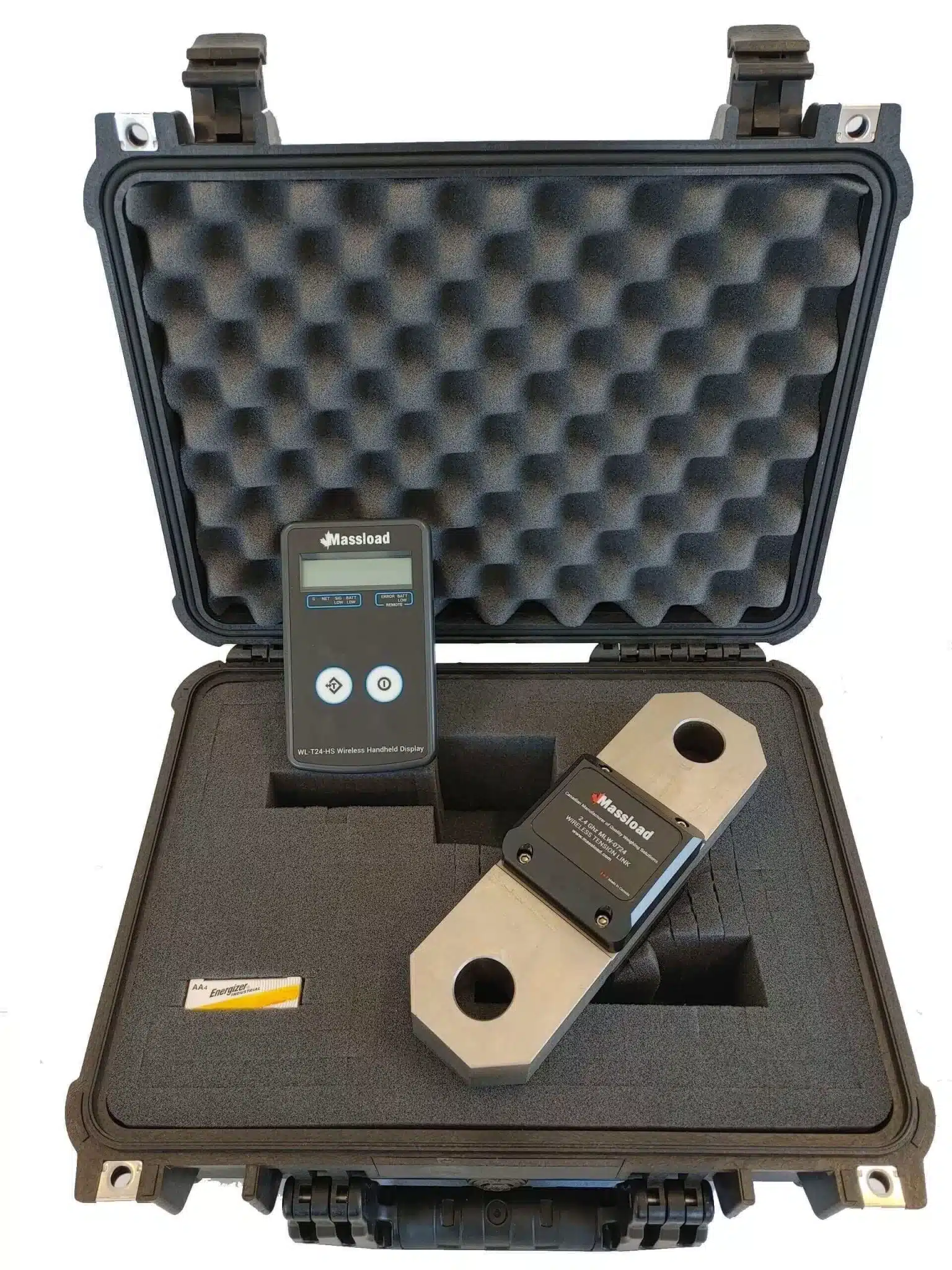 July 24, 2023
July 24, 2023
The weighing industry uses a variety of load cells to fit different application needs and requirements. Tension load cells are strain gauge-type load cells that measure pulling or tension forces, making them ideal for crane and hoist weight monitoring. Some tension link load cells feature bi-directional sensitivity, allowing for compression force measuring capabilities.
Features of Tension Link Load Cells
In lifting and line tension applications, determining a tension load cell for your application should consult the requirements and conditions under which the application will work.
Tension Type Load Cells
Different tension link load cells perform better for specific applications, depending on load capacity, headroom requirements, and other design elements and factors. Tension-type load cells include the following:
- Tension Links: These load cells form a link between the hook and the measurement subject and are installed below the hook of a crane. Tension links reduce headroom by up to 1-2 feet because of their size and shackles on each end. Low-profile tension links partially compensate for this issue.
- S-type Load Cells: These perform similarly to tension links and, being more compact, are suited to applications where headroom is critical. However, they are limited to smaller capacities, up to 10,000-20,000 lbs. S-type load cells include an upper and lower threaded hole to accommodate mounting eye bolts for aligning loads to the central axis.
- Load Shackles: When headroom is essential, and a dead end is not available, load shackles allow for the installation of a load monitoring pin (load pin) for force measurement. These are best in medium to heavy weighing operations and affect headroom by the smallest amount.
- Clamp Sensors: These measure loads without impacting headroom because they clamp onto the wire rope near the termination end of the crane or hoist. These clamp-on tension load cells are ideal for monitoring and limiting overload capacity.
Tension Link Load Cell Applications
Specific industrial applications require measuring pulling or tension forces for safety and performance. Crane scale load cells are ideal force measurement components in industrial equipment such as cranes and hoist weight monitoring and rigging applications. Crane load systems are excellent applications for tension link load cells, ensuring that the operation remains stable by recording the weight of the crane load. Other industrial application uses for crane load cells include:
- Tank & Hopper Scales (S-type load cells)
- Tensile Strength Measurement (Tension link or S-type load cells)
- Towing Loads & Cable Forces (Tension link or load shackles)
- Hanging Scales (S-type load cells)
- And More
Environmental Considerations of Tension Type Load Cells
Factors in the environment can affect the performance of load cells. It’s essential to address conditional challenges for the component to work as intended. Moisture, chemical exposure, temperature, wind, and other vibrational conditions are vital considerations when choosing a load cell.
Moisture and chemical exposure can cause corrosion, leading to short or open circuits and other electronic and mechanical failures. Tension type load cells are commonly used outdoors where moisture and chemical exposure occurs. In those areas, it’s essential for equipment to meet moisture ingress standards, such as IP 67 or greater, to ensure proper load cell performance.
Temperature is also a consideration, as extreme temperatures can adversely affect resistive elements of load cells and the strength of the spring steel element. Selecting a load cell that can function within the set temperatures necessary is essential to accuracy; the components of these applications should compensate for temperature variation. Temperature ranges are often specified as “compensation temperature range” and “operating temperature range.” Tension links used in harsh climates must be specifically designed to accommodate extreme temperatures such as -40C in cold climates.
Vibrational conditions, including seismic activity, heavy traffic, or industrial operations, can artificially affect load measurements; wind forces are also a factor. However, proper installation of the load cell can reduce the chances of measurement inaccuracy.
Find a Tension Link Load Cell to Meet Your Application Needs at Massload Technologies
Not sure which tension link load cell is suitable for your application? Request a quote for more information on tension type load cells and their capabilities or if you need help finding a tension-type solution to meet your requirements. Can’t find a tension link load cell that addresses specific challenges? Request a quote for a custom tension load cell solution designed and engineered by Massload Technologies, an industry leader in force measurement technology since 1981.


